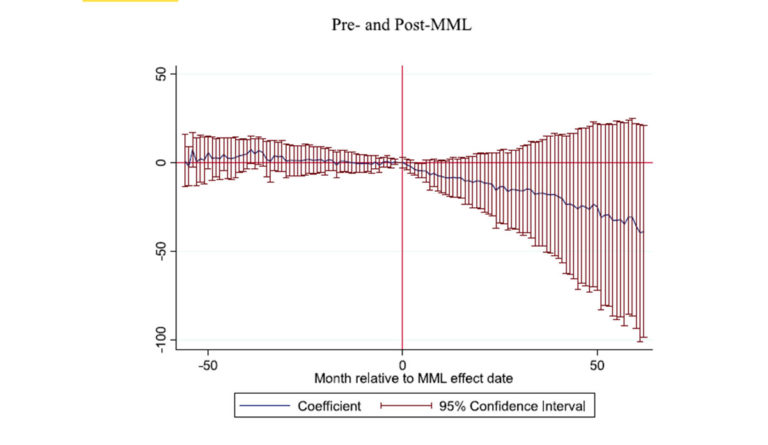Weed This: The Marijuana Alternative to Opioids
Did state medical marijuana laws change opioid prescribing?

Read Time: 2 minutes
Published:
In 2020, more than 90,000 people died from a drug overdose. Nearly 75% of these deaths involved opioids.
Opioids prescribed by doctors have become a gateway to addiction. What starts as a treatment to relieve pain can slowly turn into a dangerous disorder. People who misuse prescription opioids may transition to heroin, which these days often contains the extremely dangerous substance fentanyl.
The growing opioid crisis has more patients and doctors looking to marijuana as an alternative form of pain relief. For some people, cannabis appears to be effective for treating chronic pain while carrying a much lower risk of overdose. As of 2021, 36 states have medical marijuana laws, which authorize the use of registered cannabis products to treat certain conditions including severe pain, cancer, and AIDS.
Wen et. al investigated changes in opioid prescribing after medical marijuana laws were passed. They noted the date when states enacted their medical marijuana laws and tracked opioid prescriptions through medical claims data from 2009 to 2015 for people with employer-sponsored health insurance. Changes in opioid prescriptions were measured using monthly morphine milligram equivalents (MMEs). MME is a standardized way to characterize opioid dosage.
In the graph above, the vertical line at 0 indicates when state medical marijuana laws took effect. Data to the left of this line are MMEs used by this population before these laws were enacted and to the right are MMEs once medical marijuana was legalized. The graph’s downward trend illustrates the reduction in MMEs of opioids per patient after states implemented medical marijuana laws.
Overall, medical marijuana laws decreased opioid dosage per enrollee by about 7%. The number of patients prescribed opioids also decreased since physicians are able to recommend and certify patients to obtain medical marijuana cards. The authors note these reductions were mostly observed in the 45-54 age group, who tend to have higher opioid overdose death rates.
Other studies have observed similar reductions in opioid prescriptions among Medicaid enrollees. These findings, while not tied directly to overdose deaths in this population, suggest that legal medical access to marijuana could play a role in preventing opioid-related harms.
Databyte via Drake C, Wen J, Hinde J, Wen H, Recreational cannabis laws and opioid‐related emergency department visit rates, Health Economics, 2021.



